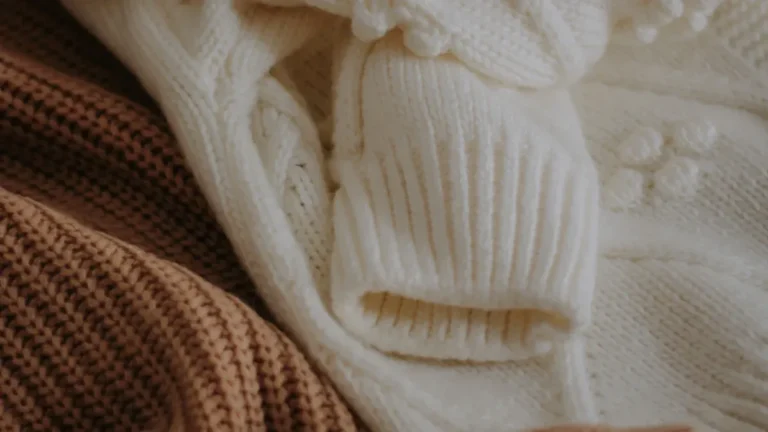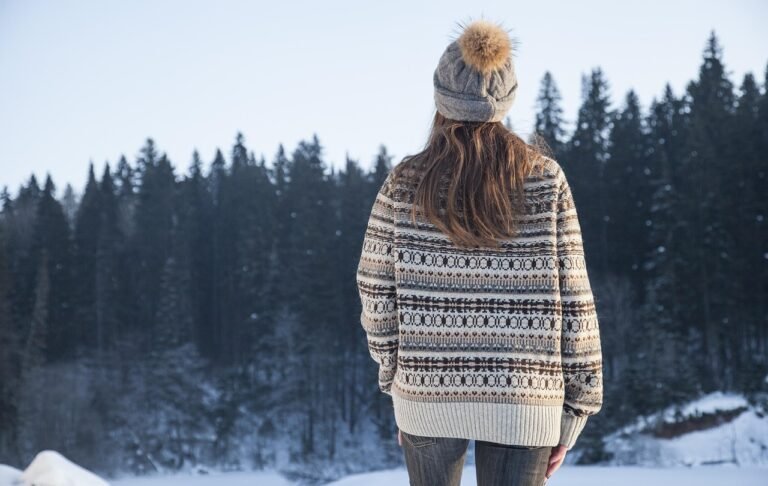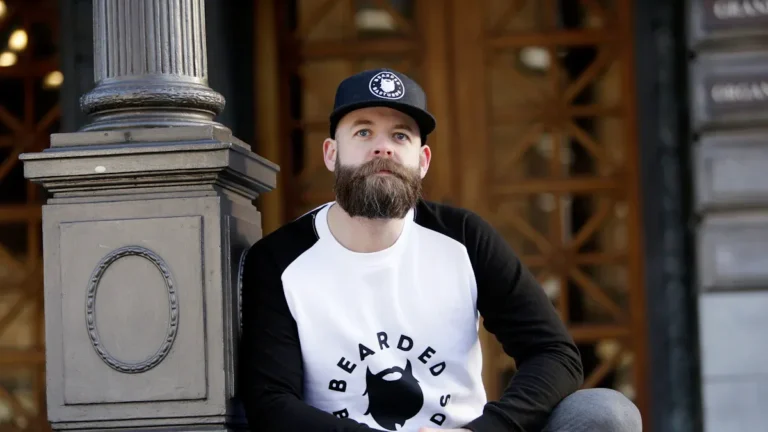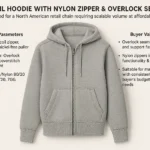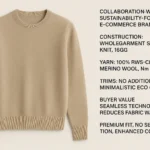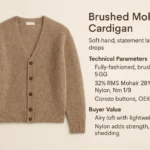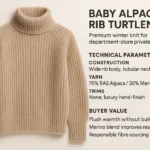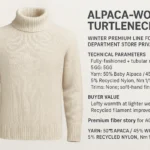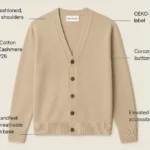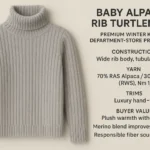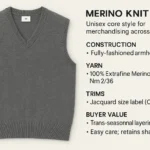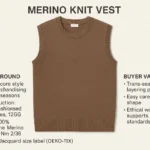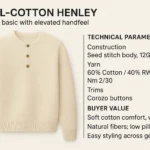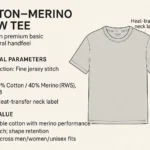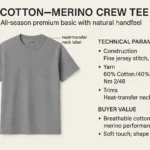
What is Native American Sweater Mens Called
Native American sweaters for men are called by various names that reflect their cultural significance and unique design patterns. The most common terminology includes “Navajo sweater,” “Pueblo sweater,” and “Southwestern pattern sweater,” with each name representing different tribal traditions and artistic styles. These traditional garments are characterized by their intricate geometric patterns, vibrant colors, and the use of high-quality wool or cotton materials. Understanding what these sweaters are called helps buyers and enthusiasts appreciate the cultural heritage and authentic craftsmanship behind these iconic pieces of indigenous wearable art.
You might see names like Cowichan sweater, Chimayo sweater, and Navajo-inspired sweater when you search for a native american sweater for men. These sweaters have special patterns and colors. The designs tell stories from different tribes. Many stores use names like Wolf Native American Sweater, Blue Native Tribes Pattern Sweater, and Southwest Green Symbol Sweater.
|
Sweater Name |
Price |
|---|---|
|
Wolf Native American Sweater Black |
$59.95 |
|
Blue Native Tribes Pattern Native American Sweater |
$59.95 |
|
Southwest Green Symbol Native American Sweater |
$59.95 |
You should look for real handwoven details and true tribal marks to find real sweaters. Each sweater shows the skill and culture of the people who made it.
Key Takeaways
-
Native American sweaters, such as Cowichan and Chimayo, have special patterns. These patterns share stories from their culture.
-
You should look for handwoven parts and tribal symbols. This helps you know the sweater is real.
-
Cowichan sweaters are thick and keep you warm. They use natural wool. Families often give them to the next generation.
-
Chimayo sweaters mix Spanish and Indigenous styles. They show the deep history of New Mexico.
-
Navajo-inspired sweaters have big diamond shapes. These shapes stand for important ideas in their culture.
-
Tribal print sweaters are popular now. Make sure Native artisans make them to help their culture.
-
When you buy one, look for tags from the artisan and tribal certificates. This proves the sweater is real.
-
Take care of your sweater by washing it gently and storing it well. This keeps it nice for a long time.
Native American Sweater Names

Cowichan Sweater
Origin and Patterns
The Cowichan sweater comes from the Coast Salish people. In the 1860s, Indigenous girls learned knitting from the Sisters of St. Ann. They mixed this new skill with their old weaving ways. This made a special kind of sweater. Coast Salish weaving used mountain goat hair and wool from Salish Wool dogs. Later, people started using sheep’s wool and knitting needles. Cowichan sweater patterns tell stories about family and community. The designs can show animals, nature, or important symbols. These patterns help you know where the sweater comes from.
|
Aspect |
Details |
|---|---|
|
Historical Origins |
The Cowichan sweater started with Coast Salish weaving. People changed their ways during colonization and used new materials and skills. |
|
Cultural Significance |
The sweater shows Coast Salish identity and storytelling. Families pass them down for many years. |
|
Weaving Practices |
Old blankets were made from mountain goat hair and Salish Wool dogs. They took months to finish and were very good quality. |
|
Adaptation to Change |
In the 1800s, Coast Salish women began knitting sweaters. They did this because there were fewer traditional blankets. The sweaters kept old designs from weaving. |
|
Modern Industry |
Cowichan sweaters are sold in many places now. This helps women in the community earn money and keep their culture alive. |
|
Trademark Protection |
The Cowichan Tribes have trademarked sweater names. This keeps the sweaters real and made the right way. |
Wool and Craftsmanship
Cowichan sweaters use thick, natural wool. This wool keeps you warm and dry in wet weather. Each sweater is hand-knit, so every one is different. Coast Salish women use special skills to make strong sweaters. Families often keep these sweaters for many years. The Cowichan sweater is known for its quality and the hard work it takes to make. Wearing one means you share in Coast Salish heritage.
-
The Cowichan sweater shows the Coast Salish people’s culture.
-
The patterns tell stories about families.
-
These sweaters are warm, last a long time, and are passed down in families.
Chimayo Sweater
Regional Weaving
Chimayo sweaters come from Chimayo and Santa Fe, New Mexico. Spanish settlers brought churro sheep in the 1500s. Local weavers mixed Spanish weaving with Indigenous designs. Over time, Chimayo sweaters became a symbol of the area’s culture. In the early 1900s, weavers brought back the tradition. Tourists and collectors liked these sweaters. Today, Chimayo sweaters show how cultures can mix and stay strong.
Signature Motifs
Chimayo sweaters have two stripes and a design in the middle. This makes them easy to spot. The middle design often has shapes or symbols from the Southwest. Each weaver adds their own style, so no two sweaters are the same. When you buy a Chimayo sweater, you help keep this tradition alive. The bright patterns and colors make these sweaters special in any collection.
Navajo-Inspired Sweater
Diamond Patterns
Navajo-inspired sweaters have bold diamond patterns. These come from Navajo weaving. The diamond shape is important in Navajo culture. It can mean the four directions or life’s journey. The patterns use strong lines and shapes to tell stories. Wearing a Navajo-inspired sweater shows respect for Navajo art and history.
Southwestern Influence
Navajo-inspired sweaters show the spirit of the American Southwest. The colors and patterns remind you of the desert and Navajo traditions. These sweaters use special symbols and meanings. Other native american sweaters may use more colors and shapes from other tribes. Navajo-inspired designs help you see the unique art of the Southwest.
Tribal Print Sweater
Modern Interpretations
Tribal print sweaters are very popular now. Designers use shapes like diamonds, triangles, and zigzags. These shapes are bold and easy to see. Most sweaters have earthy colors, but some are bright. The bright colors make the patterns stand out. Patterns often repeat, which shows balance in the design. Some sweaters have symbols that mean something special in Native cultures. If you look closely, you can see a handmade touch. This style shows the care and skill in each sweater.
-
Earthy colors and bright colors
-
Repeating patterns for balance
-
Symbols with special meaning
-
Looks and feels handmade
Tribal print sweaters come from many Native traditions. You might see patterns like those on a native american sweater, but with a new look. Some brands work with Native artists to keep the designs real. Other brands use these patterns in new ways for today’s fashion.
Popularity in Fashion
Tribal print sweaters are now a big trend. You can find these prints on sweaters, dresses, jackets, and more. Many people wear tribal print hoodies and T-shirts as streetwear. The patterns and colors help you stand out.
-
Long dresses with tribal prints
-
Bags, scarves, and jewelry with tribal patterns
-
Jackets and blazers with tribal designs
-
Hoodies and T-shirts in street style
Designers like tribal prints because they tell a story. They also make outfits special. Wearing a tribal print sweater shows you like unique art and culture. It also helps keep these designs alive today.
Native American Sweater Features
Distinctive Patterns
Symbolism in Motifs
When you see a native american sweater, the patterns stand out first. These patterns are not just for looks. Each one shares a story or message from the maker’s culture. Cowichan sweaters started with simple colors. Later, they added more detailed patterns. These patterns show the history and skill of Native American women. Navajo sweaters often have diamonds and zigzags. Diamonds can mean mountains or the four directions. Zigzags might show lightning or water. Some sweaters from the Haida and Tlingit peoples use animal shapes like ravens or bears. These animals are important in their stories and beliefs.
You can also find other symbols, like cacti, sunbursts, and tribal marks. Each symbol connects to the land, sky, or people’s past. Wearing these sweaters means you carry a piece of that story.
Color Choices
Color is very important in these sweaters. You often see earthy colors like terracotta, brown, and turquoise. These colors remind you of the land and sky in the Southwest. Some sweaters use bright colors to make patterns pop. Geometric shapes, like diamonds and chevrons, use these colors to show harmony with nature.
-
Common colors: terracotta, turquoise, brown, cream, black
-
Bright accents: red, yellow, blue
-
Patterns: diamonds, chevrons, stripes
Designers pick these colors to show the beauty of nature. The colors and shapes together help you feel close to the land and its stories.
Materials
Wool and Natural Fibers
Most Native American sweaters use natural fibers. Wool is the most common. It keeps you warm and lasts a long time. Early sweaters used wool from mountain goats or special dogs. Today, most sweaters use sheep’s wool. Some makers use cotton or blends for lighter sweaters. Natural fibers help the sweater breathe and feel nice.
Tip: Wool sweaters keep you warm even when wet. This makes them good for cold or rainy days.
Rib-Knit Details
You might see rib-knit cuffs, collars, or hems on these sweaters. Rib-knit details help the sweater fit better and keep its shape. They also make the edges stronger, so the sweater lasts longer. These small touches show the maker’s care and skill.
|
Material |
Benefits |
|---|---|
|
Wool |
Warm, durable, water-resistant |
|
Cotton |
Soft, breathable, lightweight |
|
Rib-knit trim |
Keeps shape, adds strength |
Craftsmanship
Handwoven Techniques
Makers use special handwoven ways to make each sweater. They often knit or weave every part by hand. This takes a lot of time and skill. Some sweaters have hand-stitched seams, which make them strong and easy to fix. Makers pick natural materials carefully, using knowledge passed down for many years.
When an animal was used for its hide, people held ceremonies to honor its spirit and give thanks. This spiritual way made sure each sweater had not just beauty, but also the prayers and hopes of its maker.
You can see the difference in the details. Hand-rolled hems and French seams help the sweater last a long time. Each sweater is unique because of these careful steps.
Artisanal Quality
You get more than just clothing when you buy a handwoven sweater. Each native american sweater shows the values and stories of the community. Makers use eco-friendly dyes from plants and minerals. Some even use digital tools to save rare designs. Many artisans work with fashion designers to share these styles with new people.
-
Natural dyes for color
-
Unique patterns for each sweater
-
Work with modern designers
These features make every sweater special. You help keep a living tradition going and support these skills for the future.
Authenticity Tips
Maker’s Marks
Recognized Artisans
You can tell if a native american sweater is real by looking for marks from known artisans. Many Indigenous artists sign their work or add a special tag. These marks show the sweater comes from their community and follows their traditions. When you buy from a trusted artisan, you help their culture and keep their art going.
-
Check for artisan signatures or tags.
-
Buy from sellers who work with Indigenous groups.
-
Support artists who share their stories and skills.
Tribal Certification
Tribal certification helps you trust the sweater is real. Some sweaters have labels or certificates from tribal groups. These marks prove the sweater uses old methods and supports fair work. Cowichan sweaters might have trademarks like “Genuine Cowichan” or “Cowichan Approved.” These labels mean Coast Salish Nation members hand-knit the sweater with raw wool.
Tip: Always look for tribal certification to make sure your sweater is authentic.
Material Quality
Genuine Wool
Material quality is important for a real sweater. Real sweaters use natural, hand-spun sheep’s wool. This wool feels warm and lasts a long time. You might see small color changes or rough spots. These signs show the wool is not dyed or processed.
|
Material Quality |
Description |
|---|---|
|
Yarn Type |
Natural, hand-spun, undyed sheep’s wool. |
|
Durability |
Strong yarn that keeps its shape for years. |
|
Water Resistance |
High lanolin makes the sweater resist water and stains. |
|
Moisture Management |
Absorbs sweat and lets heat out, keeping you dry. |
|
Traditional Craftsmanship |
Hand-knit in one piece using tribal ways by Coast Salish Nation members. |
Handcrafted Signs
Handmade sweaters have small details machines cannot copy. You may see uneven stitches or small changes in the pattern. These signs mean someone made the sweater by hand. Look at the seams and edges for careful work. Hand-knit sweaters often feel heavier and stronger than factory ones.
Cultural Value
Storytelling in Design
Sweater designs share stories from the maker’s tribe. Each pattern or symbol means something special. For example, Navajo weavers use a “spirit line” to show their energy in the art. Cowichan sweaters have animals and nature, sharing family and community stories. These designs are more than decorations. They hold the history and identity of the people who made them.
Note: If designers use these symbols without knowing the meaning, they can change the story. Always respect the meaning behind each design.
Ethical Sourcing
Ethical sourcing means buying from sellers who respect Native traditions. Some brands have copied Native designs without asking. This hurts Indigenous artists and their culture. You should buy from sellers who work with Native groups and give credit to the original makers.
|
Brand |
Issue |
|---|---|
|
Urban Outfitters |
|
|
Minnetonka |
Sold shoes inspired by Native traditions without giving credit. |
|
SHEIN |
Used Nahua elements without approval from Mexico’s Ministry of Culture. |
Buying ethically helps protect Native art and supports the people who make it. You help keep these traditions alive.
Native American Sweater Styles

Cowichan Style
Heavy Wool
You will notice that Cowichan sweaters feel thick and warm. The Coast Salish people from the Northwest Coast first made these sweaters. They used mountain goat hair in the past, but now most sweaters use sheep’s wool. This heavy wool keeps you warm even in cold, wet weather. The yarn feels soft but strong. You can wear a Cowichan sweater as a jacket or a layer in winter. The wool’s natural oils help keep out rain and snow.
Traditional Patterns
Cowichan sweaters show bold patterns that stand out. You often see animals like eagles, whales, or deer. Some sweaters have geometric shapes or family symbols. Each pattern tells a story about the maker’s family or tribe. You might see stripes or zigzags that repeat across the sweater. These designs help you know the sweater’s origin. The Coast Salish people use these patterns to share their history and values.
Here is a quick look at the Cowichan style:
|
Style |
Region/Tribe |
Description |
|---|---|---|
|
Cowichan Sweater |
Northwest Coast Indians |
Hand-knitted sweaters made from wool, originally using mountain goat hair, now commonly sheep’s wool. Distinctive designs that have become a classic in Native Canadian clothing. |
Chimayo Style
Southwestern Weaving
Chimayo sweaters come from New Mexico, especially the Chimayo and Santa Fe areas. You will see that weavers use special looms to create tight, flat fabric. The weaving style comes from both Spanish settlers and local Native traditions. The climate in the Southwest is dry, so these sweaters feel lighter than Cowichan styles. You can wear a Chimayo sweater in cool weather without feeling too hot.
Unique Motifs
Chimayo sweaters stand out because of their center designs. You will often see a large motif in the middle, with stripes on each side. These motifs use shapes like diamonds, arrows, or crosses. Each weaver adds their own touch, so every sweater looks unique. The colors often reflect the desert, with reds, browns, and turquoise. When you wear a Chimayo sweater, you show off the art and culture of the Southwest.
Navajo Style
Diamond and Geometric Designs
Navajo-style sweaters use bold diamond shapes and sharp lines. You will see patterns that look like mountains, rivers, or the four directions. The Navajo people use these designs to share stories about their land and beliefs. The colors often include black, white, red, and blue. These sweaters feel soft but sturdy. You can spot a Navajo-style sweater by its strong geometric look.
Influence on Modern Fashion
Navajo designs have inspired many fashion brands. You might see Navajo patterns on sweaters, jackets, or even shoes. Designers use these patterns to add color and meaning to their clothes. When you wear a Navajo-style sweater, you connect with a long tradition. You also help keep these patterns alive in today’s world.
Regional differences in Native American sweaters come from the materials and climate in each area. Tribes in cold places used thick wool or fur, while those in warm regions chose lighter fabrics. Each tribe’s history and respect for nature show in their sweater styles.
Other Tribal Styles
Pueblo Weaving
Pueblo weaving comes from the Southwest, like New Mexico and Arizona. Pueblo people have made textiles for a long time. They use upright looms to make strong, flat cloth. Pueblo weavers often pick cotton or wool for their work. Their designs show things like the land, sky, and daily life.
Pueblo sweaters and wraps have stripes and stepped patterns. You might see symbols like clouds or rain. These patterns show how Pueblo people want to live in harmony with nature. Colors like deep red, black, white, and turquoise are common. Each color means something special. For example, turquoise can mean water or sky.
Pueblo weaving is not just art. It helps share stories and keeps traditions alive.
Many Pueblo weavers teach their skills to family members. You can find their work in mantas and new sweaters. Some artists use old patterns, but others try new ideas. Wearing a Pueblo-style sweater lets you carry on this tradition.
Plains Tribal Patterns
Plains tribes like the Lakota, Cheyenne, and Blackfoot have their own styles. Plains sweaters often have bold, geometric patterns. These patterns come from beadwork, quillwork, and painted hides. The designs use symbols like arrows, triangles, and crosses.
Sweaters inspired by Plains tribes use bright colors. Red, yellow, blue, and green look bright on plain backgrounds. Each pattern can tell a story about bravery, family, or the land. A zigzag can show a river or a journey.
Here are some Plains tribal motifs:
|
Motif |
Meaning |
|---|---|
|
Arrow |
Protection, direction |
|
Triangle |
Mountains, strength |
|
Cross |
Four directions, balance |
|
Zigzag |
Water, movement |
You can spot Plains-style sweaters by their repeating shapes and strong lines. Some sweaters have fringe or beads to honor old clothing. Today, Native artists mix old patterns with new styles. When you pick a Plains-inspired sweater, you help keep these patterns alive.
Tip: Try to buy sweaters made by Native artisans. This helps real communities and keeps traditions strong.
Each tribal style shows the land and culture of its people. Pueblo weaving and Plains patterns both show Native American skill and creativity. Wearing these sweaters helps you celebrate a rich heritage.
Spotting Imitations
Visual Inspection
Pattern Consistency
First, look at the patterns on the sweater. Real sweaters have neat and even patterns. The shapes and lines should match on both sides. If the patterns look messy or do not match, it might be fake. Native makers care a lot about their work. They check every detail. Look for symbols that fit the tribe or area. Cowichan sweaters often show animals or family signs. Navajo-inspired sweaters use diamonds and zigzags. If the patterns look random or wrong, it could be an imitation.
Material Feel
Touch the sweater if you can. Real sweaters use natural fibers like wool. The fabric should feel thick, warm, and a bit heavy. If it feels thin or too stretchy, it may be fake. Real wool feels soft but strong. You might feel small bumps or rough spots. These show the sweater was made by hand. Machine-made sweaters feel too smooth and perfect. Use your hands and eyes to check.
Researching Sellers
Trusted Retailers
Buy from sellers who respect Native traditions. Good stores tell you about the makers. They say which tribe or artist made the sweater. Look for shops that work with Native communities. Some stores have labels or papers to prove where the sweater comes from. If a seller cannot answer your questions, be careful.
Artisan Support
Buying from Native artisans helps keep traditions alive. Many real sweaters come from small shops or families. These sellers often share stories about the weavers. They may show pictures or videos of how sweaters are made. When you buy from them, you help real people and their culture. Stay away from brands that use words like “tribal” or “Native-inspired” but do not name a tribe or artist. This shows they do not respect the culture.
Price Range
What to Expect
Real Native American sweaters cost more than factory ones. You pay for the skill, time, and good materials. Prices can go from $100 to over $500. If a sweater is very cheap, it is probably not real. Handmade sweaters take many hours to make. The price shows the hard work and tradition.
Red Flags
Watch out for these warning signs:
-
Labels that only say “tribal” or “Native-inspired” but do not name a tribe.
-
Sweaters that look mass-produced or come from fast fashion stores.
-
Sellers who do not give credit to the artist or tribe.
-
Prices much lower than other real sweaters.
Tip: Always ask about where the sweater comes from. A real seller will be happy to tell you.
You can spot fake sweaters by looking closely, asking questions, and buying from real artisans. This helps you find a sweater that honors Native culture and keeps traditions alive.
Buying Native American Sweaters
Online Platforms
Etsy and Artisan Shops
You can find special sweaters on Etsy. Many Native makers sell their sweaters there. You can read about the person who made each sweater. Some shops tell you the story behind their patterns. You might see pictures of how the sweaters are made. Some sellers let you pick your own colors or patterns. This means you can get a sweater made just for you. These shops show that the sweaters are real and handmade.
Amazon and Retailers
Amazon has lots of sweaters with tribal patterns. Some look like Native designs, but not all are real. Always check who is selling the sweater. Try to find out about the maker and the tribe. Some brands, like Faherty, work with Native artists. You can also shop on websites that sell Native clothing. For example, 49native.com has many sweaters for men and women. Their sweaters have special patterns and show respect for Native culture. Another good site is lhknitwear.com. They sell the Navajo Sweater. It is handmade from 100% wool and has a soft inside.
|
Platform |
Description |
Link |
|---|---|---|
|
Has many Native American sweaters for men and women. The designs are unique and respect Native culture. |
||
|
lhknitwear.com |
Sells the Navajo Sweater. It is strong, has old-style patterns, and is made from 100% wool by hand in Nepal. |
Tip: Read what other buyers say before you buy. Many people say these sweaters are warm, well made, and fit well.
Supporting Artisans
Custom Handmade Options
If you buy from Native makers, you can get a sweater made just for you. Many weavers let you pick the colors, size, and symbols. This makes your sweater one of a kind. Custom sweaters take more time to make. But you help the artist and their tradition.
Small Business Impact
Buying from small shops helps Native families. Your money supports their work and keeps weaving alive. Many small shops tell you the story of each sweater. They often use earth-friendly materials and fair trade ways. When you buy from them, you help protect Native art for the future.
Price Guide
Budget to Premium
Native American sweaters can cost different amounts. Some simple sweaters cost about $60. Handmade or custom sweaters can cost $100 to $500 or more. The price depends on the wool, the time it takes, and the artist’s skill. Sweaters made from 100% wool cost more, but they last longer and feel warmer.
Factors Affecting Cost
Many things change the price:
-
What kind of wool or fiber is used
-
If it is handwoven or made by machine
-
How big and detailed the pattern is
-
If you ask for custom colors or designs
-
Shipping and import costs
Note: Higher prices usually mean better quality and real skill. If a sweater is very cheap, check if it is real.
You can find a great sweater by shopping on trusted sites, learning about the makers, and helping Native artists. This way, you get a nice sweater and help keep important traditions alive.
Care and Maintenance
Taking care of your Native American sweater helps it last for many years. You protect the colors, patterns, and the story woven into each piece. Here are some easy ways to keep your sweater looking its best.
Cleaning Tips
Wool Preservation
Wool sweaters need gentle care. You should avoid washing them too often. Air out your sweater after wearing it to keep it fresh. When you need to clean it, use cool water and a gentle detergent made for wool. Hand washing works best. Soak your sweater for about 15 minutes and avoid rubbing or twisting the fabric. If you use a washing machine, choose the delicate cycle, turn the sweater inside out, and place it in a mesh bag.
-
Hand wash gently, do not scrub or wring.
-
Machine wash only on delicate, inside a mesh bag.
-
Lay flat to dry on a rack.
-
Keep away from direct sunlight.
-
Never use a dryer.
Tip: Dry your sweater flat to keep its shape. Sunlight can fade colors, and heat from a dryer can shrink wool.
Avoiding Damage
You can prevent damage by handling your sweater with care. Do not hang it, as this can stretch the fibers. Avoid dry cleaning, which uses chemicals that may harm natural wool. If you spill something, blot the spot gently with a clean cloth. Do not rub, as this can push stains deeper into the fibers.
Storage Advice
Proper Folding
Fold your sweater neatly instead of hanging it. Hanging stretches the shoulders and changes the shape. Place your folded sweater in a breathable fabric bag. This keeps dust out and lets air flow around the wool.
-
Fold sweaters to avoid stretching.
-
Store in breathable bags.
-
Keep in a cool, dry place.
Moth Protection
Wool attracts moths, so you need to protect your sweater. Use natural repellents like cedar blocks or lavender sachets. Avoid mothballs, which have strong chemicals. Vacuum your storage area before putting sweaters away. Air out your knitwear every few months to keep it fresh and discourage insects.
-
Use cedar or lavender for moth protection.
-
Inspect and air out sweaters regularly.
-
Keep storage cool and dry.
Note: Regular checks help you spot any damage early and keep your sweater safe.
Repairs
Finding Artisans
If your sweater gets a hole or starts to unravel, you can find skilled artisans to help. The Native American Trading Company offers conservation, cleaning, and re-weaving for traditional textiles. Experts can repair holes and match yarn colors. They work with both private clients and art dealers, making sure your sweater stays beautiful.
-
Seek out textile repair specialists for serious damage.
-
Ask for museum-quality cleaning and restoration.
DIY Methods
You can fix small snags or loose threads at home. Use a wool needle to gently tuck loose yarn back into the sweater. For tiny holes, match the yarn color and stitch carefully. If you are unsure, ask an expert for advice.
Tip: Always use gentle hands and the right tools when repairing wool. This keeps your sweater strong and looking great.
Taking these steps helps you enjoy your Native American sweater for many seasons. You honor the artistry and tradition every time you care for it.
Native American sweaters have a lot of meaning and history. The designs and symbols show Native American culture. When you want one, look for good quality and buy from Native makers. You can get real sweaters from trusted stores. Take care of them by cleaning and storing them the right way.
-
Patterns and symbols tell cultural stories on sweaters.
-
Men and women wear these sweaters in different styles.
-
It is important to pick real, handmade sweaters.
FAQ
What is a Cowichan sweater?
A Cowichan sweater is a thick, hand-knit wool sweater made by Coast Salish people. You see bold animal or nature patterns. These sweaters keep you warm and show Coast Salish culture.
How do you know if a Native American sweater is authentic?
You check for artisan tags, tribal certification, and hand-knit details. Real sweaters use natural wool and unique patterns. Buy from trusted sellers who share the maker’s story.
Can you wash a Native American sweater in a machine?
You should not use a regular machine wash. Hand wash with cool water and gentle soap. Lay the sweater flat to dry. This keeps the wool strong and the shape right.
What do the patterns on Native American sweaters mean?
Patterns tell stories about family, land, or beliefs. For example, diamonds can mean mountains or directions. Animal shapes often show respect for nature. Each symbol has a special meaning.
Are tribal print sweaters always made by Native artisans?
No, many tribal print sweaters come from big brands or factories. You should look for information about the maker. Support Native artisans to get real, meaningful sweaters.
Why do Cowichan sweaters cost more than regular sweaters?
Cowichan sweaters use thick, natural wool and take many hours to knit by hand. You pay for the skill, time, and tradition in each piece.
Where can you buy real Native American sweaters?
You can shop on Etsy, 49native.com, or at Native art markets. Look for sellers who work with Native communities. Read reviews and check for artisan details.
What is the best way to store a wool sweater?
Fold your sweater and keep it in a cool, dry place. Use cedar blocks or lavender to protect from moths. Do not hang wool sweaters, as this can stretch them.






